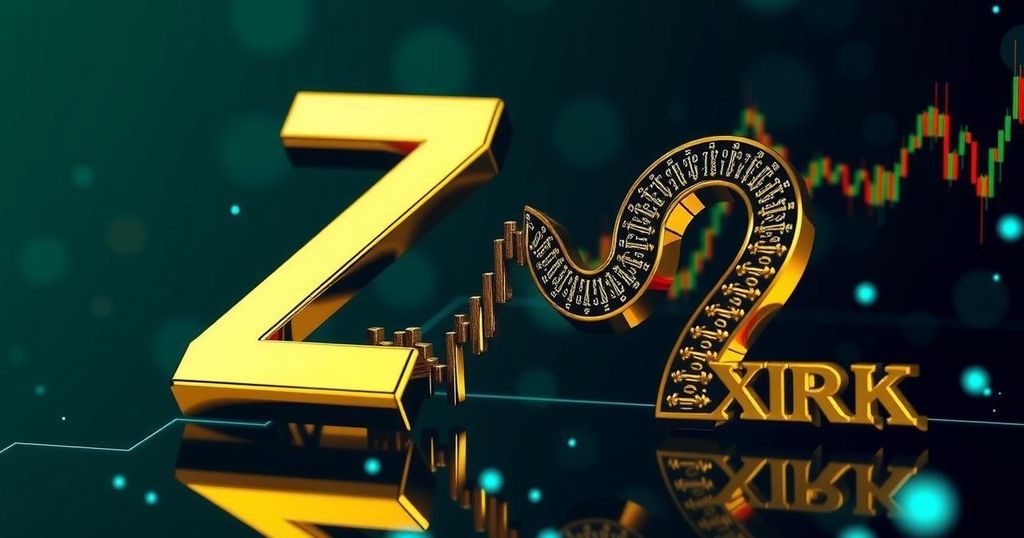Is a Rally to $2.6K Possible for Ethereum Amidst Increasing Competition and Investor Uncertainty?
Ethereum’s price has fallen by 7.3% in early October, mirroring trends across the altcoin market and raising doubts about its ability to reclaim the $2,600 level. Investor sentiment is mixed due to disappointing ETF launches and increasing competition in the blockchain space. Layer-2 solutions offer some hope, but overall trading volume and activity remain stagnant, suggesting a challenging road ahead for Ethereum’s price recovery.
As of October 8, Ethereum’s price stands at $2,436.66, reflecting a substantial decline of 7.3% within the first week of the month, effectively erasing gains accumulated in late September. This downturn aligns with a broader trend observed in the altcoin market, indicating that this fluctuation is not solely attributed to internal dynamics within the Ethereum ecosystem. Consequently, there is considerable uncertainty among traders regarding Ethereum’s ability to reclaim the critical $2,600 threshold. Investor sentiment appears to be ambivalent, particularly as Ethereum has experienced a 2% decrease since September 1, contrasting with a 4.5% increase in the altcoin market capitalization during the same time frame. This disparity can be partially traced back to the unsatisfactory introduction of Ethereum exchange-traded funds (ETFs) in the United States, which reported no net inflows on October 7 and have seen a total outflow of approximately $548 million since their inception in July, based on information from Farside Investors. The competitive landscape for Ethereum’s decentralized applications (DApps) has intensified, with alternative blockchains focusing on scalability—such as Solana, BNB Chain, Tron, Avalanche, and Sui—garnering considerable attention and financial backing. Collectively, these networks have achieved a total value locked (TVL) of $19.5 billion, representing 43% of Ethereum’s TVL of $45.6 billion. Moreover, Ethereum’s share of trading volumes in decentralized exchanges has decreased dramatically, falling from 64% earlier in 2023 to merely 22% now, with Solana emerging as a leader in this domain. Such developments raise concerns regarding Ethereum’s market supremacy and have sparked fears of further depreciation in Ether’s value. Proponents of Ether might argue that Ethereum retains a dominant position when considering layer-2 scaling solutions like Base, Arbitrum, Polygon, and Optimism. Base, for instance, has achieved significant growth, capturing a 14% market share just seven months after its launch. Noteworthy activity on this network includes Aerodrome, which has facilitated trades worth $2.93 billion over the past week, and Uniswap, with a trading volume of $1.36 billion during the same timespan. Additionally, on the Optimism platform, the leading decentralized exchange, Velodrome, reported $360 million in volume, while Camelot on Arbitrum recorded $554 million in trades within the last week. Nonetheless, the proliferation of layer-2 networks has contributed to a reduction in transaction fees on the base layer by employing aggregation techniques, thereby benefitting from the data storage optimization (blob space) introduced in June 2023. Despite the advancements in Ethereum’s ecosystem, activity on the base network has exhibited stagnation, which has provoked disappointment among Ether investors. The low competition for processing power has resulted in Ether becoming inflationary, with diminished demand for block space and lower transaction fees causing a decline in incentives for validators to secure the network. In an unexpected turn of events, on October 3, BlackRock, a prominent provider of Ether ETFs, articulated that Ether’s value proposition is more aligned with “risk-on” assets, positioning it as a contender against equities and venture capital—contrasting sharply with Bitcoin’s established identity as “digital gold.” Further complicating the market outlook, Daniel Yergin, Vice Chairman of S&P Global, reportedly commented to CNBC that the global economy is entering a “dangerous time,” primarily attributed to rising geopolitical tensions in the Middle East and decreasing oil demand from China. Additionally, China’s mainland CSI 300 stock market index experienced a decline of 9% on October 8, despite the National Development and Reform Commission releasing details of an anticipated economic stimulus plan. Given the current climate of investor hesitance and the fierce competition Ethereum is facing, the prospects for Ether regaining the $2,600 milestone appear considerably bleak in the near term.
Ethereum, the second-largest cryptocurrency by market capitalization, is currently facing challenges in its price performance relative to Bitcoin and other altcoins. Its recent decline reflects broader market trends linked to changes in investor sentiment and competitive pressures from other blockchain networks offering superior scalability. Compounding these challenges is the lack of support for Ethereum ETFs in the United States, impacting investor confidence. As Ethereum’s dominance in decentralized exchanges wanes and layer-2 networks proliferate, the environment continues to evolve, necessitating careful observation from traders and investors alike.
In summary, Ethereum is currently grappling with a host of challenges that have contributed to its price lag compared to Bitcoin and other altcoins. The recent price decline, coupled with disappointing ETF performance and increasing competition from alternative blockchains, casts doubt on Ethereum’s immediate ability to reach the $2,600 price point. Moreover, external economic pressures and shifting investor sentiments further complicate the outlook for Ether in the short term. The road to recovery will require significant changes in market dynamics and renewed investor interest in Ethereum’s products and capabilities.
Original Source: cointelegraph.com






Post Comment